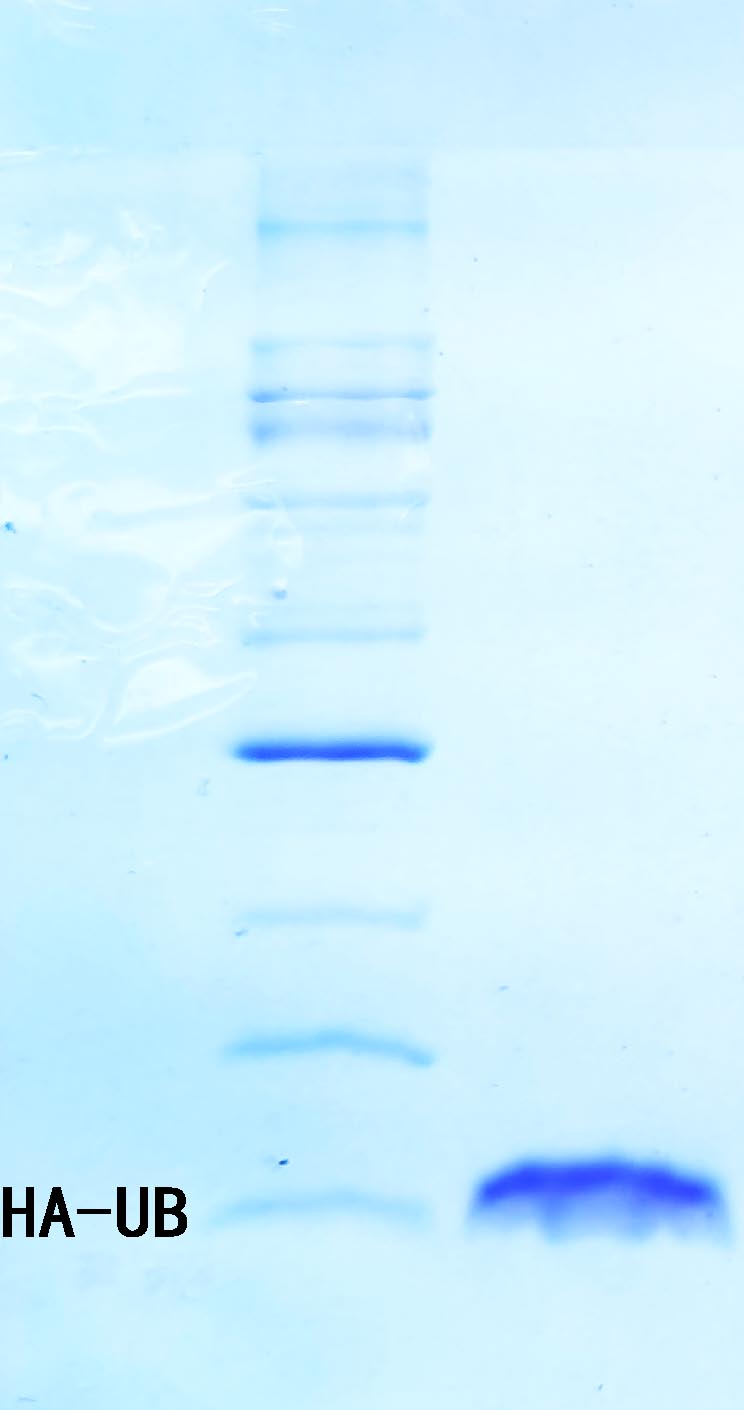Ubiquitin is a 76 amino acid (aa) protein that is ubiquitously expressed in all eukaryotic organisms. Ubiquitin is
highly conserved with 96% aa sequence identity shared between human and yeast Ubiquitin, and 100% aa sequence
identity shared between human and mouse Ubiquitin. In mammals, four Ubiquitin genes encode for two Ubiquitinribosomal
fusion proteins and two poly-Ubiquitin proteins. Cleavage of the Ubiquitin precursors by deubiquitinating
enzymes gives rise to identical Ubiquitin monomers each with a predicted molecular weight of 8.6 kDa. Conjugation of
Ubiquitin to target proteins involves the formation of an isopeptide bond between the C-terminal glycine residue of
Ubiquitin and a lysine residue in the target protein. This process of conjugation, referred to as ubiquitination or
ubiquitylation, is a multistep process that requires three enzymes: a Ubiquitin activating(E1) enzyme, a Ubiquitin
conjugating (E2) enzyme, and a Ubiquitin ligase (E3). Ubiquitination is classically recognized as a mechanism to target
proteins for degradation and as a result, Ubiquitin was originally named ATP dependent Proteolysis Factor 1 (APF1) .
In addition to protein degradation, ubiquitination has been shown to mediate a variety of biological processes such as
signal transduction, endocytosis, and postendocytic sorting . This Nterminal HAtagged Ubiquitin protein allows for the
convenient detection or affinity purification of ubiquitinated proteins in vitro. The HA peptide sequence
(YPYDVPDYA) is an epitope derived from the influenza Hemagglutinin protein. This tag is specifically recognized by
anti HA antibodies and anti HA agarose.
Quantity: 1 mg
MW: 9.7 kDa
Source: E. coliderived human Ubiquitin protein Contains an Nterminal HA (YPYDVPDYA) tag
Stock: Lyophilized from a solution in deionized water.
Solubility: Reconstitute at 10 mg/mL in an aqueous solution.
Purity: > 95% by SDS‐PAGE
Use: Recombinant Human HA-Ubiquitin can be conjugated to substrate proteins via the subsequent actions of a
Ubiquitin activating (E1) enzyme, a Ubiquitin conjugating (E2) enzyme, and a Ubiquitin ligase (E3). Reaction
conditions will need to be optimized for each specific application. We recommend an initial Recombinant Human HAUbiquitin
concentration of 5-50 μM.
Storage: Use a manual defrost freezer and avoid repeated freeze thaw cycles.
24 months from date of receipt, -20 to -70 °C as supplied.
6 months, -20 to -70 °C under sterile conditions after reconstitution.





